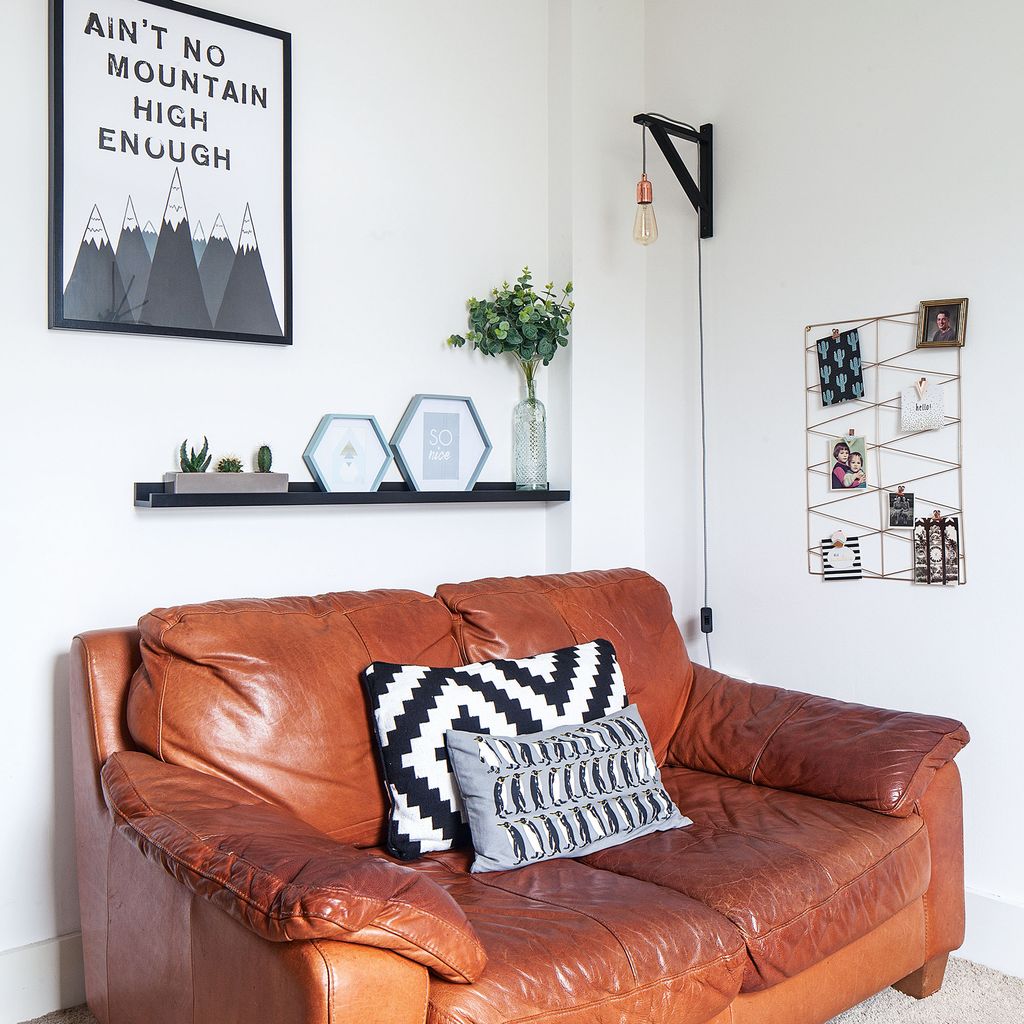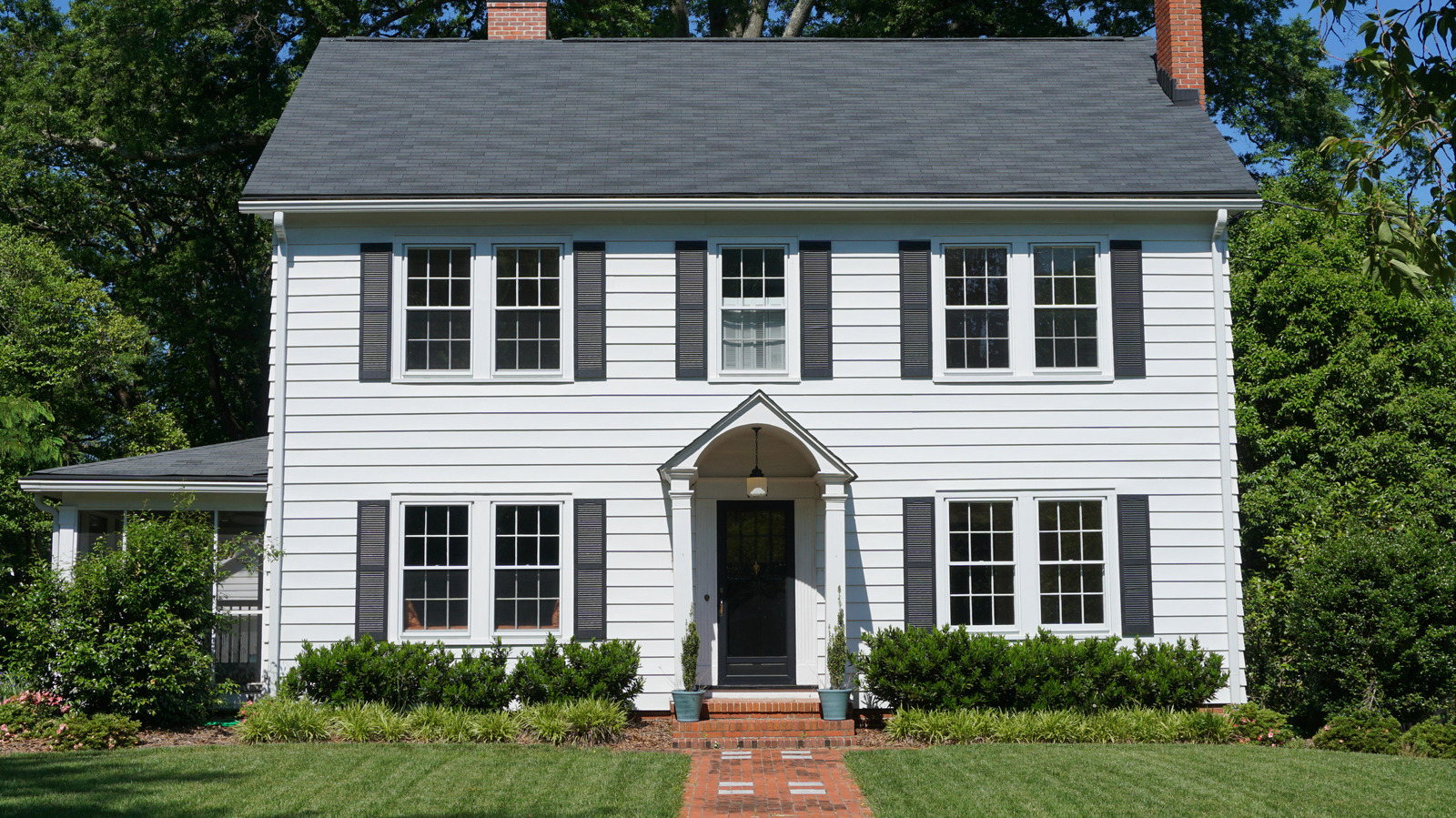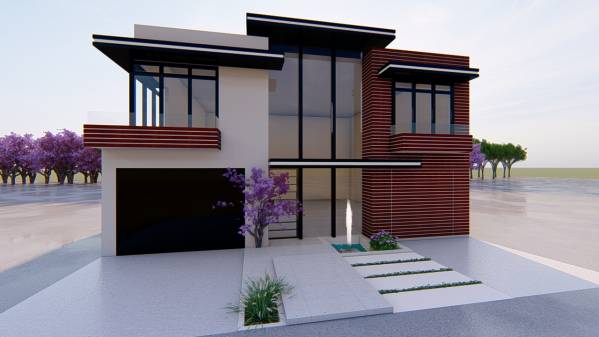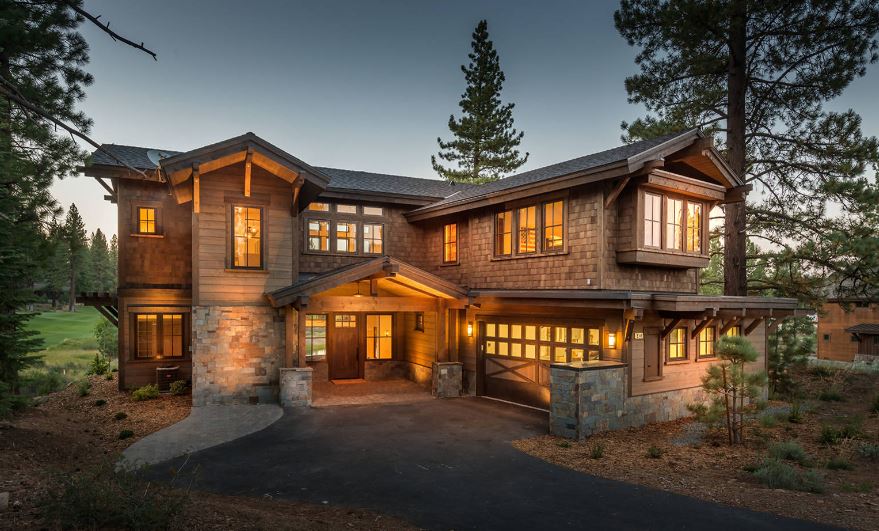Best lighting options for a living room with dark walls: Transforming a space with dark walls into a warm and inviting haven requires careful consideration of lighting. Dark walls, while stylish, can absorb light, making the room feel smaller and darker than it actually is. This guide explores various lighting techniques and fixture choices to illuminate your dark-walled living room effectively, creating the perfect ambiance for relaxation, entertainment, and everyday living.
We’ll delve into the crucial aspects of ambient, task, and accent lighting, explaining how to layer them for optimal impact. Understanding color temperature and intensity is key to setting the right mood – from a cozy, intimate setting to a bright and airy space. We’ll also examine different fixture styles and materials, helping you choose options that complement your décor and maximize light reflection.
Finally, we’ll address common challenges and offer practical solutions to ensure your dark-walled living room is beautifully and functionally lit.
Types of Lighting
Effective living room lighting, especially with dark walls, requires a layered approach combining ambient, task, and accent lighting to create a balanced and inviting atmosphere. Each type serves a distinct purpose, contributing to the overall ambiance and functionality of the space.
Ambient, task, and accent lighting work together to create a well-lit and comfortable living room. Ambient lighting provides overall illumination, task lighting focuses light on specific areas for activities, and accent lighting highlights architectural features or artwork.
Ambient Lighting
Ambient lighting provides general illumination, setting the overall mood and brightness of the room. In a living room with dark walls, it’s crucial to choose an ambient lighting solution that’s bright enough to prevent the space from feeling too dim or claustrophobic, but also warm and inviting. Examples include recessed lighting, chandeliers, and floor lamps.
For a dark-walled living room, consider warm-white (2700K-3000K) recessed lighting for even illumination. A warm-toned chandelier (2700K-3000K) can add elegance and a focal point, while a dimmer switch allows you to adjust the intensity according to your needs. Avoid overly bright or cool-toned ambient lighting, as this can make the dark walls appear even darker and harsher.
Task Lighting
Task lighting focuses light on specific areas where you perform activities like reading, working, or playing games. This targeted illumination improves visibility and reduces eye strain. In a living room, task lighting might include table lamps, floor lamps positioned next to reading chairs, or desk lamps.
For a dark-walled living room, strategically placed table lamps with warm-white (2700K-3000K) bulbs next to seating areas provide excellent task lighting. The light should be directed downwards, minimizing glare and maximizing the effectiveness for reading or other close-up tasks. A floor lamp with a flexible arm allows for precise adjustment of light direction and intensity.
Accent Lighting
Accent lighting highlights architectural features, artwork, or decorative objects, adding depth and visual interest to the room. This type of lighting should be used sparingly to avoid overwhelming the space. Examples include track lighting, picture lights, or strategically placed spotlights.
In a dark-walled living room, accent lighting can be used to draw attention to artwork or a fireplace mantel. Using track lighting with adjustable heads allows for flexible placement and direction of light. Warm-white (2700K-3000K) or even slightly warmer (2200K) bulbs can enhance the colors and textures of the highlighted features. Avoid using cool-toned accent lighting, as it can clash with the dark walls.
Comparison of Ambient Lighting Options
The following table compares three common ambient lighting options for a living room with dark walls:
| Lighting Type | Cost | Installation Difficulty | Aesthetic Impact |
|---|---|---|---|
| Recessed Lighting | Medium to High (depending on number and type) | Medium (requires ceiling work) | Clean, modern, versatile |
| Chandelier | Medium to High (depending on size and material) | Low to Medium (depending on size and complexity) | Elegant, statement piece, can be traditional or modern |
| Track Lighting | Low to Medium | Low to Medium (depending on complexity of the track system) | Modern, flexible, adaptable to different styles |
Light Color Temperature and Intensity
Choosing the right color temperature and intensity is crucial for creating the perfect atmosphere in your dark-walled living room. These elements significantly impact how the space feels and how well you can see. Getting this balance right will transform your living room from dimly lit and gloomy to inviting and comfortable.Light color temperature is measured in Kelvin (K).
Lower Kelvin values represent warmer colors, while higher values represent cooler colors. The intensity, or brightness, is measured in lumens. Understanding how these factors interact with your dark walls is key to successful lighting design.
Color Temperature’s Impact on Mood and Ambiance
Warm light (2700K-3000K), often described as having a yellowish or amber hue, creates a cozy and inviting atmosphere. Think of a warm, glowing fireplace. This is ideal for relaxation and socializing. It softens the starkness of dark walls, making the room feel more intimate and comfortable. Cool light (5000K-6500K), with its bluish or white tone, feels more energizing and modern.
In a dark-walled living room, however, cool light can sometimes feel harsh and clinical, potentially highlighting imperfections in the walls. Neutral light (3500K-4100K), falling between warm and cool, offers a balanced approach, suitable for a variety of moods and activities. It provides a brighter, more neutral light that won’t feel overly warm or cold. The best choice depends on your personal preference and the overall style of your living room.
Light Intensity’s Effect on Space Perception and Visibility
Light intensity directly affects how spacious a room feels and how clearly you can see details. In a dark-walled living room, low intensity lighting can make the space feel smaller and more enclosed. Details might be harder to see, potentially creating a sense of gloom. Higher intensity lighting, on the other hand, can brighten the room, making it feel more open and spacious.
Finding the best lighting options for a living room with dark walls can be tricky, but layered lighting is key. You want to balance ambiance with functionality, much like choosing the right vanity for your bathroom; if you’re looking for stylish and affordable options, check out this guide on where to buy stylish and affordable bathroom vanity cabinets online.
Back to the living room, remember that a mix of overhead, task, and accent lighting will create the perfect atmosphere in your dark-walled space.
It will also improve visibility, allowing you to see textures, artwork, and other details more clearly. Finding the right balance is key; too much light can be harsh, while too little can be insufficient for comfortable living. Consider using layered lighting to control intensity effectively.
Selecting Appropriate Light Color Temperatures and Intensities for Various Activities
Choosing the right light for different activities is essential for optimizing comfort and functionality.
Here’s a guide:
| Activity | Color Temperature (K) | Intensity (Approximate Lumens per Fixture) | Reasoning |
|---|---|---|---|
| Reading | 3000-4000 | 300-500 | Provides sufficient illumination without strain on the eyes. A warmer light can be more relaxing. |
| Watching TV | 2700-3000 | 200-300 | Dim, warm light minimizes eye strain and enhances the viewing experience. |
| Entertaining Guests | 2700-3500 | Varies depending on the size of the room and the number of fixtures | Creates a warm, inviting ambiance, making the space feel welcoming and comfortable. A mix of intensities can be beneficial here. |
Light Fixture Styles and Materials: Best Lighting Options For A Living Room With Dark Walls
Choosing the right light fixtures is crucial for a dark-walled living room, as they not only provide illumination but also significantly impact the overall ambiance and style. The interplay between fixture style and material is key to achieving the desired mood and reflecting your personal taste.
Light Fixture Styles for Dark Walls
Three distinct styles of light fixtures can beautifully complement a dark-walled living room: modern, traditional, and minimalist. Each offers a unique aesthetic and functionality. Modern fixtures often prioritize clean lines and innovative designs, while traditional fixtures embrace classic shapes and ornate details. Minimalist fixtures, as their name suggests, focus on simplicity and functionality, often incorporating subtle yet elegant designs.
Modern: Modern lighting fixtures often feature sleek lines, geometric shapes, and metallic finishes like brushed nickel or chrome. They might incorporate innovative materials like acrylic or LED strips for a contemporary feel. Think pendant lights with exposed bulbs or linear chandeliers with a minimalist aesthetic. These fixtures add a sense of sophistication and clean lines to the space.
Examples include sculptural pendant lights made from spun metal or minimalist track lighting systems.
Traditional: Traditional lighting fixtures typically boast elaborate designs, often featuring warm-toned metals like brass or bronze, and materials like glass or crystal. These fixtures might include ornate chandeliers, table lamps with detailed bases, or wall sconces with intricate patterns. They bring a sense of warmth and classic elegance to the room. Think of a crystal chandelier with cascading tiers or a wrought iron floor lamp with a fabric shade.
Minimalist: Minimalist lighting fixtures emphasize simplicity and functionality. They often feature clean lines, neutral colors, and simple shapes. Materials might include matte black metal, white porcelain, or clear glass. These fixtures often serve as subtle yet effective light sources, avoiding unnecessary ornamentation. Examples include a single, simple pendant light made of brushed metal or a recessed lighting system with minimal visible fixtures.
Material Choices and Their Impact, Best lighting options for a living room with dark walls
The material of a light fixture significantly impacts its reflectivity, aesthetic, and overall contribution to the room’s atmosphere.
Metal: Metal fixtures, such as those made of brass, chrome, or nickel, offer varying levels of reflectivity. Polished metals reflect light more intensely, creating brighter spaces, while matte finishes provide a softer, more diffused light. The color of the metal also influences the overall ambiance; warm-toned metals like brass contribute to a warmer feeling, while cooler tones like chrome create a more modern feel.
For instance, a polished brass chandelier will create a warm, inviting glow, while a brushed nickel pendant light will offer a sleek, contemporary feel.
Glass: Glass fixtures, especially clear glass, offer excellent light transmission and can create a sense of spaciousness in a room. However, the type of glass affects the light quality; frosted or textured glass diffuses light, while clear glass allows for more direct illumination. Colored glass can introduce a subtle hue to the lighting, adding to the room’s overall aesthetic.
A clear glass pendant light will provide bright, crisp light, while a frosted glass table lamp will offer a softer, more diffused glow.
Finding the best lighting options for a living room with dark walls can be tricky, needing a balance of ambiance and brightness. It’s a similar challenge to maximizing space in a small bathroom, which is why choosing the right vanity is crucial. If you’re on a budget, check out this guide for the best bathroom vanity cabinet for small bathrooms under $500 to get some ideas.
Back to the living room, layered lighting – a mix of ambient, task, and accent – works wonders with dark walls to create a warm and inviting space.
Wood: Wooden light fixtures bring a natural, warm element to a space. The type of wood and its finish influence the overall look; darker woods create a more dramatic and sophisticated feel, while lighter woods contribute to a brighter, more airy atmosphere. Wooden fixtures often provide a softer, more diffused light, particularly if the wood is not highly polished.
A dark walnut floor lamp will add a touch of rustic elegance, while a light oak pendant light will contribute a more natural and airy feel.
Lighting Schemes for Dark-Walled Living Rooms
Below are descriptions of three different lighting schemes, each utilizing various fixture styles and materials to create distinct moods. These are conceptual examples, and the specific fixtures and placement would need to be adjusted based on the room’s size and layout.
Scheme 1: Warm and Inviting. This scheme uses a combination of warm-toned metal fixtures (brass or bronze) and glass elements to create a cozy and welcoming atmosphere. A large brass chandelier serves as the central light source, complemented by table lamps with glass shades and wall sconces with brass accents. The overall effect is warm, inviting, and sophisticated.
Scheme 2: Modern and Minimalist. This scheme prioritizes clean lines and functionality, utilizing minimalist metal fixtures (matte black or brushed nickel) and subtle lighting. Recessed lighting provides ambient illumination, complemented by a single, sleek pendant light above a seating area. This scheme creates a clean, uncluttered, and modern aesthetic.
Scheme 3: Dramatic and Eclectic. This scheme blends different styles and materials for a more dramatic and eclectic look. It incorporates a large, statement-making chandelier made from a combination of metal and glass, paired with a mix of table lamps and floor lamps with varying styles and materials (wood, metal, and glass). This approach creates a visually interesting and dynamic space.
Layering Lighting for Optimal Effect

Source: futurecdn.net
Layering lighting is crucial in a living room, especially one with dark walls, to create depth, ambiance, and functionality. A single light source will leave the room feeling flat and potentially gloomy. By strategically combining different types of lighting—ambient, task, and accent—you can transform the space into a warm and inviting haven. The size and layout of your room will significantly influence the placement and types of lighting you choose.
Effective layering involves a careful balance of light levels and styles. Ambient lighting provides overall illumination, task lighting focuses light on specific areas for activities, and accent lighting highlights architectural features or artwork. In a dark-walled living room, the goal is to compensate for the light absorption of the walls and create a well-lit, yet cozy atmosphere.
Ambient Lighting in Dark-Walled Living Rooms
Ambient lighting sets the overall mood and brightness of the room. In a living room with dark walls, you’ll need a brighter ambient light source than you would in a room with lighter walls. Consider a combination of sources to avoid harsh shadows and create a more even distribution of light. For example, a central ceiling fixture, like a large chandelier or a flush-mount fixture with diffused light, could be supplemented by wall sconces for a softer, more evenly distributed glow.
The style of the fixture should complement the room’s decor, while the light color temperature should be warm (2700-3000K) to create a cozy atmosphere.
Task Lighting for Specific Activities
Task lighting is essential for specific activities like reading, working, or playing games. Floor lamps with adjustable arms, table lamps on side tables, or even under-cabinet lighting in a built-in bookcase can provide focused illumination where needed. For reading, a directed light source is ideal to prevent eye strain. When choosing task lighting, consider the color temperature – a slightly cooler light (3000-4000K) might be preferable for tasks that require concentration, while a warmer temperature can still work well for relaxing activities.
Accent Lighting to Highlight Features
Accent lighting adds drama and visual interest by highlighting specific features in the room. In a dark-walled living room, this is particularly effective for drawing attention to artwork, architectural details, or textured surfaces. Track lighting, picture lights, or strategically placed spotlights can be used to create dramatic effects. Consider using LED spotlights with adjustable heads to direct the light precisely where you want it.
Remember to keep the accent lighting relatively low in intensity to avoid overpowering the ambient and task lighting.
Choosing the right lighting is key for a living room with dark walls – you want to avoid a gloomy atmosphere. Think layered lighting with a mix of ambient, task, and accent lights. This contrasts nicely with the warm, inviting feel of a rustic bathroom, like the one you could create with this gorgeous rustic bathroom vanity cabinet made of reclaimed wood.
Back to the living room, remember that brighter, warmer tones can help balance the darkness of the walls and create a cozy space.
Step-by-Step Guide to Layered Lighting Design
- Assess the Room: Measure your living room and note the placement of furniture, windows, and architectural features. Consider the room’s size and shape to determine the optimal placement of lighting fixtures.
- Plan the Lighting Layers: Decide on the primary sources for each lighting layer (ambient, task, accent). For instance, a large central pendant light for ambient, floor lamps for task lighting near seating areas, and picture lights for accent lighting above artwork.
- Choose Fixtures: Select fixtures that complement your existing décor and the overall style of your living room. Consider materials, colors, and shapes to ensure a cohesive look.
- Determine Light Intensity and Color Temperature: Select the appropriate intensity and color temperature for each layer based on its function. Remember warmer temperatures for ambiance and potentially cooler temperatures for task lighting.
- Fixture Placement: Position your fixtures strategically. For ambient lighting, a central ceiling fixture is often ideal, supplemented by wall sconces for softer light. Place task lighting near seating areas and accent lighting to highlight focal points. Ensure sufficient distance between fixtures to avoid creating glare or overly bright spots.
- Test and Adjust: Once installed, test your lighting scheme. Adjust the intensity and placement of fixtures as needed to achieve the desired effect. You might need to experiment with different combinations to find what works best for your specific room and preferences.
Addressing Potential Challenges
Dark walls, while stylish, present unique lighting challenges in a living room. The inherent absorption of light by dark surfaces can lead to a dim, uninviting atmosphere if not properly addressed. Careful planning and strategic lighting choices are crucial to overcome these challenges and create a warm, well-lit space.
Light Absorption by Dark Walls
Dark-colored walls absorb a significant portion of the light emitted from your fixtures, resulting in lower overall illumination. This can make the room feel smaller and less inviting. To counteract this, you’ll need a higher intensity of light than you would in a room with lighter walls. Consider using more light sources or opting for higher-wattage bulbs within your chosen fixtures.
For example, instead of relying on a single central pendant light, incorporate multiple strategically placed lamps, sconces, and task lighting to achieve a brighter and more evenly distributed light.
Shadow Creation and Minimization
Dark walls tend to create deeper shadows, especially with directional lighting. This can make the room feel unevenly lit and potentially highlight imperfections on the walls. To mitigate this, utilize a layered lighting approach. Combine ambient lighting (general illumination from overhead fixtures or recessed lighting), task lighting (for reading or specific activities), and accent lighting (to highlight artwork or architectural features).
The combination of these lighting types will fill in shadows and create a more balanced illumination. For instance, placing a floor lamp opposite a wall-mounted sconce can help to fill in shadows created by the sconce alone.
Choosing the right lighting for a living room with dark walls is key to creating a warm and inviting atmosphere. You might need layered lighting, combining ambient, task, and accent options. If you’re planning a video showcasing your beautifully lit space, consider using alight motion pro apk for editing; its features could really enhance the final product.
Remember, brighter, warmer tones generally work best to counteract the darkness of the walls, creating a balanced and comfortable room.
Maximizing Light Reflection
Enhancing light reflection is key to brightening a dark-walled living room. Light-colored furniture, rugs, and accessories will help to bounce light around the room, reducing the impact of light absorption by the walls. For instance, a light-colored sofa and a cream-colored rug will reflect more light than their darker counterparts. Consider using metallic accents such as brass or chrome finishes on lamps and accessories; these surfaces are excellent reflectors of light.
Strategic Use of Mirrors and Reflective Surfaces
Mirrors strategically placed can significantly improve light distribution. A large mirror positioned opposite a window will reflect natural light deeper into the room. Smaller mirrors can be used to bounce light from lamps or other light sources to illuminate darker corners. For example, placing a mirror on a wall adjacent to a floor lamp will redirect the light into a previously shadowed area.
Other reflective surfaces, such as polished surfaces (like a glass coffee table or a lacquered side table), can also contribute to a brighter atmosphere. Consider the placement and size of reflective surfaces carefully; a large mirror in the wrong spot can be distracting or overwhelming.
Summary
Lighting a living room with dark walls successfully involves a strategic approach to layering different lighting types and carefully selecting fixtures that enhance the room’s ambiance. By understanding the interplay of color temperature, intensity, and fixture style, you can create a space that is both visually appealing and functionally well-lit. Remember, the key is balance – combining ambient, task, and accent lighting to achieve the desired mood and functionality for your living space.
Don’t be afraid to experiment and find the perfect lighting scheme that reflects your personal style and enhances the beauty of your dark walls.
Question Bank
What’s the best way to avoid harsh shadows in a dark living room?
Use multiple light sources to avoid relying on a single, strong light. Layer lighting (ambient, task, accent) and consider using diffused lighting fixtures to soften shadows.
Can I use dark-colored light fixtures in a dark room?
While it might seem counterintuitive, dark-colored fixtures can work well, especially if they’re made of reflective materials like polished metal. The key is to ensure they emit sufficient light to overcome the darkness of both the walls and the fixture itself.
How can I make a small living room with dark walls feel bigger?
Maximize light reflection by using light-colored furniture and accessories. Strategically place mirrors to bounce light around the room, creating an illusion of more space. Choose brighter color temperatures for your lighting to enhance the feeling of spaciousness.
What about energy efficiency when lighting a dark room?
Opt for energy-efficient LED bulbs. They consume less energy while providing ample brightness, helping you save on electricity bills without compromising on illumination.
- Minimalist Glass Design A Deep Dive - June 2, 2025
- Rainwater Harvesting House A Sustainable Home - May 6, 2025
- Natural Ventilation HouseA Sustainable Choice - May 6, 2025









